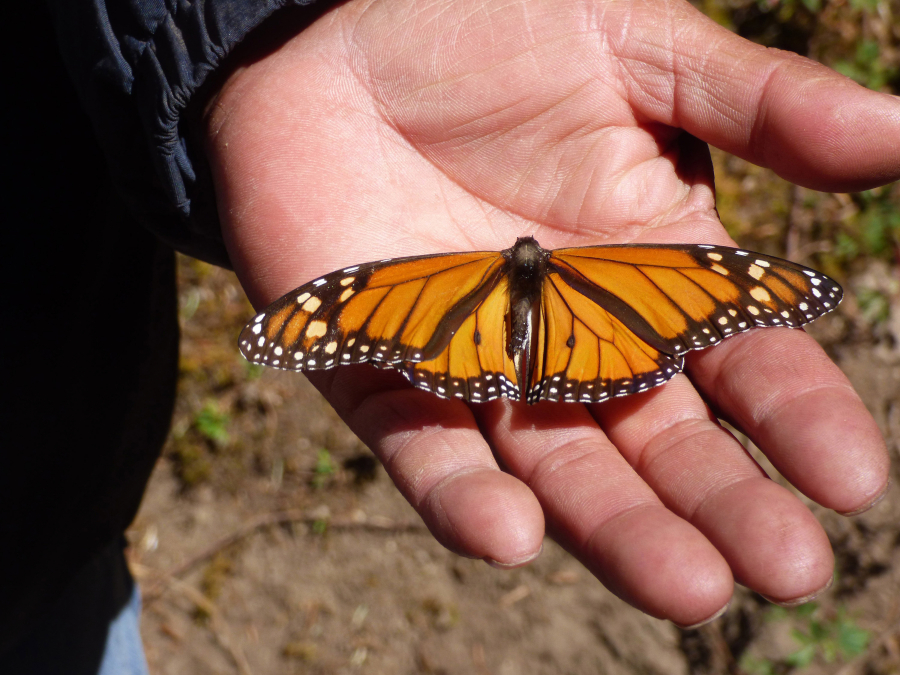OCAMPO, Mexico — This is a story that must begin at the end. But oh, what an end.
I stood on a forested mountaintop in Mexico in late February, mesmerized by monarch butterflies swirling around me, darting in and out of the trees and pockets of sunlight. They were high in the blue skies, clumped by the thousands on tree trunks and branches, clustered on woodland flowers and swarming in small streams of water on the forest floor. The sound of their wings was like a whisper on the breeze.
Bucket list experience? Absolutely.
Mingling with monarchs on a Michoacan mountaintop was a singular experience, mystical and almost spiritual.
Each year in late summer and early fall, monarchs born in the northern U.S. and Canada begin an epic journey of about 2,500 miles to mountaintops in Mexico — a place they’ve never been. It’s not clear how they know where to go. But somehow the fragile insects travel to the spot where their ancestors mated and began their own journey, at that time headed north.
The butterflies begin arriving in Mexico at the end of October and early November, close to the Day of the Dead. Some locals believe the butterflies are the souls of deceased ancestors. The monarchs stay in the forest until March, when they begin heading back north.
Monarch populations are measured by the geographic size of the overwintering sites in Mexico. From a peak of about 45 acres in 1996-97, the size has been on a downward trend. In the 2016-17 winter, the area was estimated to be about 7 acres.
“What’s fair to say right now is that scientists estimate the population is at a pretty serious risk of getting so low that it might not be able to recover,” said Karen Oberhauser, director of the University of Wisconsin, Madison Arboretum and co-chair of Monarch Joint Venture, an organization that coordinates monarch conservation efforts in the U.S.
Mexico’s butterfly reserves were named a UNESCO World Heritage Site in 2008. But Omar Vidal, CEO of the World Wildlife Fund in Mexico.
El Rosario butterfly reserve, a little more than 100 miles west of Mexico City, is the largest sanctuary in the state of Michoacan, and it’s where I got my first look at the beautiful insects. It’s perched roughly 10,000 feet above sea level, and the altitude hit me hard. Rather than make an hourlong walk to the top, I rode a horse — a bargain at 100 pesos (about $5).
At the top, a wide, sunlit meadow offered lots of photo ops. But our jaws didn’t drop until we went further into the dark forest and saw the butterflies clustered on tree trunks and branches, covering them in orange and black.



